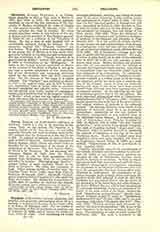

Cervia, Diocese of (CERVIENSIS), suffragan of Ravenna. Cervia is a city in the province of Ravenna, Italy, on the ancient Via Flaminia in a marshy district not far from the sea. It was called anciently Phicociae, but took its present name before 997, perhaps after the destruction of the city by fire in 708. Its political vicissitudes are more or less the same as those of Ravenna. During the episcopate of Bishop Rustico (1219), Cervia was placed under an interdict for its maltreatment of an envoy of the Archbishop of Ravenna. The first known Bishop of Cervia is St. Gerontius. He was returning with Viticanus, Bishop of Cagli, from the Roman council held in 501 to treat accusations made against Pope Symmachus, when he was assaulted and killed by bandits. (The legend says “heretics”, perhaps Goths, or more probably Heruli, of the army of Odoacer.) His relics are venerated at Cagli. Other bishops worthy of mention were: the Venetian Pietro Barbo (1440), later Pope Paul II; Bonifacio Bevilacqua (1601), afterwards Cardinal, and an intimate friend of Gregory XV, who made him Duke of Fornano. The diocese has a population of 12,696, with 12 parishes, 26 churches and chapels, 43 secular priests, and 1 religious house of women.
U. BENIGNI

